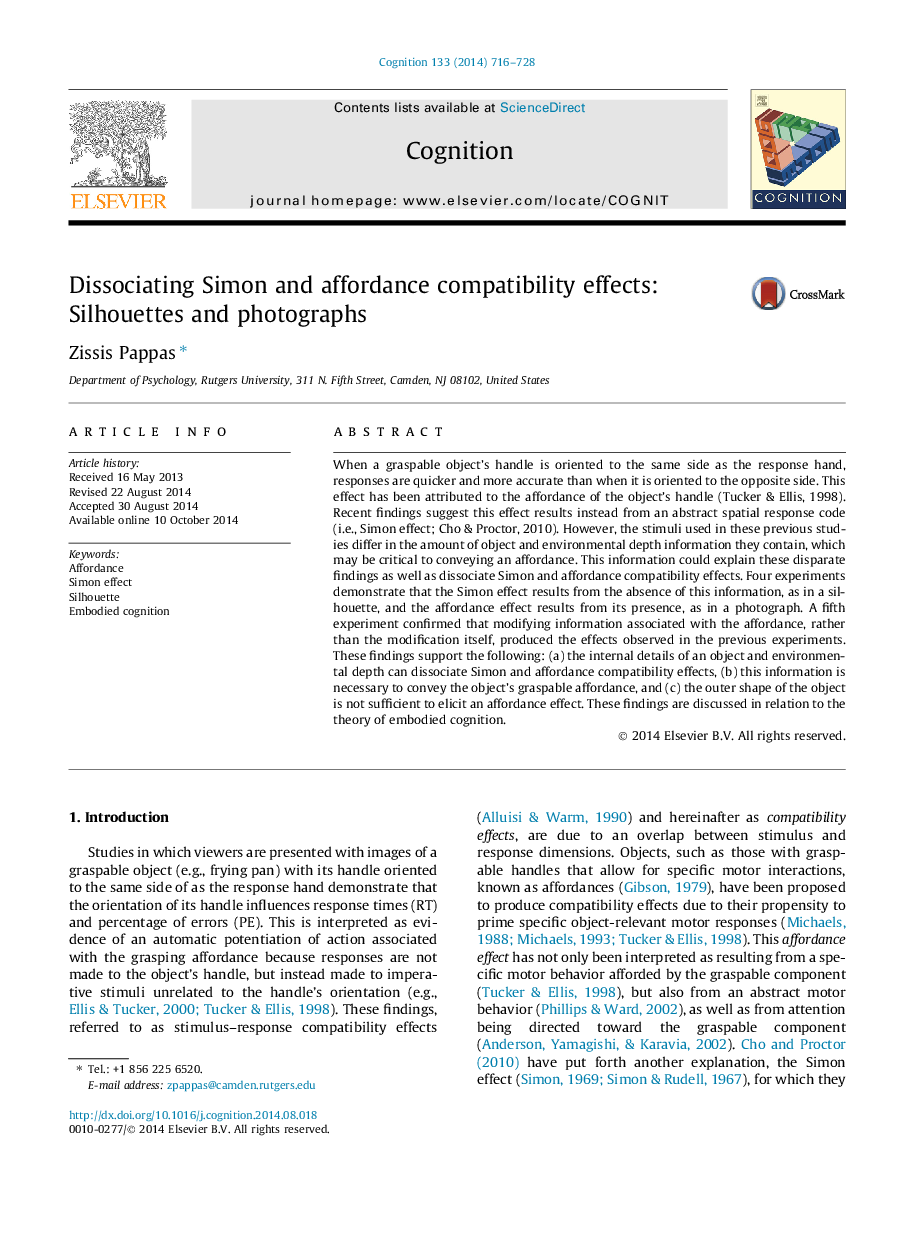| کد مقاله | کد نشریه | سال انتشار | مقاله انگلیسی | نسخه تمام متن |
|---|---|---|---|---|
| 926366 | 921834 | 2014 | 13 صفحه PDF | دانلود رایگان |
• Object’s outer shape information (OSI) is sufficient to produce a Simon effect (SE).
• OSI is insufficient to produce an affordance effect (AE).
• The AE requires an object’s internal details and environmental depth (IDED) with OSI.
• The presence/absence of IDED information dissociates the SE and AE.
• These findings are consistent with the theory of embodied cognition.
When a graspable object’s handle is oriented to the same side as the response hand, responses are quicker and more accurate than when it is oriented to the opposite side. This effect has been attributed to the affordance of the object’s handle (Tucker & Ellis, 1998). Recent findings suggest this effect results instead from an abstract spatial response code (i.e., Simon effect; Cho & Proctor, 2010). However, the stimuli used in these previous studies differ in the amount of object and environmental depth information they contain, which may be critical to conveying an affordance. This information could explain these disparate findings as well as dissociate Simon and affordance compatibility effects. Four experiments demonstrate that the Simon effect results from the absence of this information, as in a silhouette, and the affordance effect results from its presence, as in a photograph. A fifth experiment confirmed that modifying information associated with the affordance, rather than the modification itself, produced the effects observed in the previous experiments. These findings support the following: (a) the internal details of an object and environmental depth can dissociate Simon and affordance compatibility effects, (b) this information is necessary to convey the object’s graspable affordance, and (c) the outer shape of the object is not sufficient to elicit an affordance effect. These findings are discussed in relation to the theory of embodied cognition.
Journal: Cognition - Volume 133, Issue 3, December 2014, Pages 716–728
